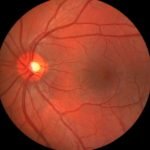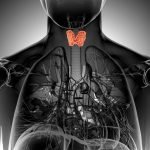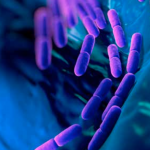“Food Allergy” Allergic and Non-allergic Reactions
Owen Miller, ND
“Food Allergy” a Misnomer Alluding to a Harmful Diet and Poor Health
The term “food allergy” is a misnomer, of course – only IgE and all – but it does work to help patients wrap their brains around the possibility… actually the probability… that their diet is harming their health. Most of the rest of the world doesn’t care about semantics or which biochemical pathway is making them miserable; they just want relief. The term “food allergy” more or less explains why they feel bad when they eat certain foods, and that understanding is empowering. Sure, they want it gone, most of all, but they also want to know where the hurt is coming from. So, when their well-meaning medical doctor, with a skin scratch test, proves the absence of true allergic reactivity (hence dismissing the very idea that their diet is making them sick), and instead diagnoses the patient with IBS or some other equally ambiguous disease with “no known cause,” and prescribes anti-inflammatories, sometimes for life, it’s depressing. Most patients will suck it up and take the prescription that relieves some or most of their symptoms, but not all their symptoms. Never all. Others, more and more all the time, do not accept the illogic of disregarding their own observations of cause and effect relationship between food and feeling, and instead look elsewhere for answers… like, to naturopathic doctors. But can we deliver?
Sleuthing for Dietary Reactions
Well, we have the classic “elimination-reintroduction-provocation” self-test protocol that we all learned in school, and which Dr Joe Pizzorno called the “gold standard” in his helpful book, Total Wellness. And, in addition, we have a number of blood tests to back up the patient’s observations and lend objectivity to our analysis. But is that enough? I don’t think so, and not by a mile.
First of all, the self-test is quite time-consuming and challenging to pull off, and is often not enough to solve all the problems associated with dietary reactions. The fact is, most people suffering from dietary reactions never see a clear-cut cause and effect relationship between their diet and their disease, anyway. Symptoms are inconsistent. Sometimes they happen with a specific food; sometimes they don’t. There are a lot of variables to take into account… the patient’s predisposition, for one, which can easily vary from day to day. The self-test can be quite frustrating to both patient and practitioner alike, which in turn make the blood tests (eg, antibody or cytotoxic tests) attractive. Unfortunately, the lab tests leave a lot to be desired, namely credibility. Oh, it’s not a bad way to begin, as long as the patient is willing to spend the money. No matter which test you choose, you’ll probably hit some of the targets, and that’s a plus. However, false positives and false negatives will mislead you as well. You’ll end up vilifying foods that cause no harm, and you’ll miss foods that do. You’ll also miss identifying the reactive “food additives,” barring the few available with blood testing, assuming such testing was accurate in the first place. And accuracy, of course, is the name of the game in lab testing. But, how do you know if a test is accurate or not? To be considered accurate (sensitivity and specificity and all), a test would have to be measured against a reliable and recognized standard, to be sure, and that doesn’t exist. The self-test “gold standard” is, for all of its advantages, unfortunately, “gold plated.” It’s just not reliable enough to be called a standard. Well, not yet, anyway.
I think we can get it there, though; and believe me, there is a lot riding on this one. Consider this: the vast majority of Americans are coming apart at the seams with chronic inflammation/chronic degenerative disease, Fact #1. Sure, there are a lot of predispositions – genetic and acquired – that play a role in the etiology of these diseases… and we have more and more therapeutic interventions every year that improve our outcomes… although, unfortunately, no one, including none of our naturopathic school research departments, is assessing our clinical outcomes. Wouldn’t that be a good idea? I mean, assuming we want to build credibility as a profession that delivers on the promise of a resolution-oriented approach. But, I digress.
Back to the facts… Fact #2: we have a lot of tools with which to leverage a positive outcome – call them “assets” – and more every year, and that’s great. But – Fact #3 – if you don’t “remove the obstacles to cure” – call them “liabilities” – as in eliminate or neutralize the “morbific agent,” (ie, the cause of the damage that triggers the inflammatory response), you can’t, barring divine intervention or blind luck, cure the disease. It’s just that simple. But, if you can find their key liabilities, you may then be able to elicit a behavioral change to minimize, or neutralize, their damaging or burdensome effects. Then, and only then, when you support their weaknesses and deficiencies with targeted therapeutic interventions, and stimulate their innate healing with hydrotherapy (classic naturopathic medicine), or with homeopathy, or acupuncture, if you’re so inclined, can you bring about a cure. And that’s what this is all about: “The Cure.” As in, curing the “incurable” chronic inflammatory diseases that are killing America – cardiovascular disease, cancer, diabetes, dementias, and arthritis, to name a few. Yup, done that. Ain’t nothing bigger, and naturopathic medicine owns that territory. Or doesn’t, if you can’t remove the obstacles to cure that are barring the way. Period. And that means you’ve got to find them first… and our methods of discovery are lacking. Not good.
Finding That Obstacle to Cure
So, let’s fix that. But how? By collectively (as in practitioners, schools, and professional organizations) working to upgrade the elimination-reintroduction-provocation self-test to the level of reliability and reproducibility that we can count on as a “gold standard,” and can measure the accuracy of a lab test. How about our naturopathic colleges making a class on the subject? They have a gazillion other classes. What’s 1 more? Better yet, cut something important but unnecessary out of the bloated curriculums. After all, we do have opportunities to learn after we graduate. Give the students a theory class and a clinical research class, where they can pool and evaluate our skilled practitioners’ collective experience – their clinical data/outcomes and the strategies they employed to deal with the epidemic of chronic inflammation/chronic degenerative disease. Our university/college research departments can facilitate this process and build the “burden of proof” – the evidence required to generate acceptance, both inside and outside of the profession. I’m sick and tired of hearing “there is no evidence.” Let’s build the evidence. No one’s going to do it for us. And, to date, it is not being done. Our professional organizations can be a big help, but without leadership and action in our schools and in their research departments, we’re not going anywhere fast enough. That’s the biggest thing this profession has proven in the past three decades that I’ve been watching: we’re not going anywhere with the substantiation of the “practice” of naturopathy. But to complain is small, unless you’re putting some skin in the game. Perhaps it’s still small, but I’ll take that risk, if it can help. I’ll apologize in advance for stepping on toes, as confrontation is so often clumsy… but so necessary… for growth. So here’s mine: Thirty years and thousands of patients have given me, among other things, these 2 “big ideas”:
- Correcting the negative outcomes associated with reactions to foods/food additives is the “missing link” to solving the otherwise incurable chronic inflammation/chronic degenerative disease epidemic [of course, this does not negate the value of supportive therapies]; and
- We can enhance the elimination-reintroduction technique by using modern medicine’s top 5 health risk biomarkers in order to make it nearly infallible in discovering those life-changing/life-threatening reactions.
Big ideas, really big. So, you’re saying, if it’s so darn big, why am I hearing about it here in this arguably minor publication and not everywhere else, as in especially the schools? Well, first of all, the “paper” is cool, and our 2 NW schools and their research departments are not interested in evaluating my work, and the, arguably, incredible results I have achieved. So, sorry, I have no institution-validated “evidence,” just my own clinical experience. Weak, I know, but, I’m past caring about what people think of me, so I’ll make these claims, and share with you my contribution to improve on the original self-evaluation technique:
By measuring a patient’s change in weight, pulse, blood pressure, blood sugar, and cholesterol, you can assess their reactions to foods/food additives with an amazing degree of accuracy.
What’s not to like about that? I’m not talking about using some compelling but unregulated and unauthorized electronic device. [I do take the FDA seriously, after all.] No, I’m talking about measuring a reaction via recognized and reliable, inexpensive and readily available, objective metrics… in fact, the most commonly employed metrics in all of health care.
OK, so you think I’m nuts. Either that, or you’ll have to admit that this is really big. I urge you to set aside your reservations about the veracity of my claims, and check out the technique for yourself. Doing so is quite painless. Although implementing all of the biomarkers is a deep well and goes beyond the scope of this article, I can give you a place to begin that is easy and reliable using weight and lipid levels. I’ve observed, over the past 9 years, that cholesterol levels can change dramatically from 1 day to the next, as an indicator of some manner of stress to the vasculature, and be correlated with rapid “water retention” weight gain, observable the following morning with a reliable and accurate digital bath scale. When a dietary change results in a rapid loss of weight, the lipid profile alters in a manner that suggests that a cardiovascular risk reduction has occurred. Forget about needing symptoms to abate; that is old school and, you will find, unnecessary. Continuing the avoidance of the foods/additives that were identified upon reintroduction to cause a rapid, presumably water, weight gain, gradually results in a reduction and even a resolution (with the additional help of “targeted assets”) of every manner of chronic inflammation, as well as body fat. I know, crazy. But what if it’s true? How about not taking my word for it, and instead checking it out for yourself? Applying this model is easy. After all, with weight and lipids you’re just using cheap but reliable tests, and ones that patients are massively bonded to, in order to evaluate whether or not a dietary change can reduce their risk of acquiring the #1 cause of premature death: cardiovascular disease. They’ll have to take a number; the line starts at the door. So, here’s the story…
First-Morning Weight
Well, I actually owe it to a patient who came to me 27 years ago complaining that she would gain 10 lb overnight if she ate a particular food. It sounded crazy, but I measured it, and I found it to be true. By then I had quite a bit of experience with the elimination-reintroduction technique, treating chronic upper respiratory and skin conditions as food allergies; however, she didn’t have any of those conditions that, at that time, were the only ones I was aware were associated with this evaluation protocol. I’ll admit, I did not understand how that weight gain affected her health, although I imagined it couldn’t be good. So, being the incredibly astute physician of 3 years that I was, I said, “Don’t eat that food.” I know, brilliant, right? A few years later I saw 2 similar, very brief anecdotal references in print, but there was insufficient accuracy in the “bath scales” at that time to inspire me to consider them useful. And besides, doesn’t everybody’s weight vary a few pounds from day to day? Well, yes, and just about everybody who doesn’t die of accidental death also acquires a chronic inflammatory disease. What if the 2 – rapid weight gain and triggers of chronic inflammation – were connected?
That’s the question that came to my mind when I began to experiment 9 years ago with the modern digital scales, and saw a correlation, in myself, between first-AM weight gain (compared with the day before) and that day’s consumption of a reactive food – a food that I had proven years before, with the horribly time-consuming and significant motivation-requiring original elimination-reintroduction technique, was the unmistakable cause of my painful and disfiguring familial predisposition – arthritis – which I resolved by avoiding the food in question. Of course, by then I had moved beyond my “disease” and did not hurt if I only ate the offending food on occasion. Yet, when I measured first-AM weight, I always got the 2-3 lb of weight gain that next morning. I knew enough to not assume it was a fat or “lean” muscle mass gain. That leaves edema. My body composition analysis device (plethysmography) concurred. Besides excessive salt consumption and the insanely bad diseases that cause edema, we commonly have inflammation and the stress response to pin this one on. How big is that? Let’s see, how about the fact that the vast majority of Americans are coming apart and dying of chronic inflammatory diseases? Like I said, big. Makes our fascination with medicines/assets look kind of myopic.
My Suggested Protocol
Here is my procedure… Begin with a lipid baseline. Next, take the patient off the most probable foods causing them trouble: dairy, egg, wheat/gluten, corn, nightshades, processed foods, and whatever the patient calls their comfort foods, their “pick-me-ups,” or their “loves.” Following a successful 4-day “cleanse” on this diet (success defined by the patient losing 1 or more pounds in the first 1-2 days with this restricted but normal-caloric diet for the patient), re-check the lipids, and see what happens.
First of all, most patients lose 3-5 pounds in 4 days and feel better. But more to the point, the LDL-cholesterol usually falls. My observed average is about a 35 mg/dL reduction. The triglycerides usually fall too, and, if previously elevated, can drop on the average of 40-50 mg/dL; however, both of these numbers can drop up to nearly 100 mg/dL. I have observed that about 1 in 5 experience a significant reduction in triglycerides, but no reduction in LDL; in fact, LDL occasionally rises. If they persevere with this system, they usually end up with a significant reduction in LDL in about a month. (I have theorized that they indeed had a successful cleansing experience, and eliminated the chemical burdens in circulation, resulting in a reduction in water retention consistent with a reduction in inflammation and stress hormones, but…their body apparently also had the power and the initiative to begin pulling trash out of “storage”, thus continuing the vascular stress that keeps LDL up. A “feel good” theory, I’ll admit, but I’m sticking with it, for now, anyway, until something better comes along.) Do not count on a reduction in your patient’s joint pain or in any other symptom they are experiencing, although it can occur. Instead, focus their attention on the reduction of the health risk biomarkers – weight and lipids – and do your best to motivate them to stop eating the foods that raise them. Add in some valuable supplemental support, and vigorously support the patient’s weaknesses and deficiencies, and in a few weeks they’ll begin to see progress…everywhere.
Instruct patients to always engage their cleansing diet for at least 4 days (up to 6 days) per week. I strongly recommend that this be done during their workweek, as they are already constrained by the work agenda in order to be successful in generating financial power. Because this type of diet results in the acquisition of physical power, it fits right in psychologically. On the weekend, of course, we want out of that “box,” making dietary constraints unappealing.
They can reintroduce 1 food per day, for 1 or 2 days following a successful cleanse, to see the water-weight gain from a reactive food and how it relates to feeling lousy in so many ways, as a result of eating a particular food. They are then free to eat whatever they desire for a day or 2, but are advised to observe their weight each morning and correlate gains with foods to be singled out in the future with the 1-food reintroduction technique. All positive associations should be double- or triple-checked for accuracy. They need a reliable scale, such as a lithium scale (check Consumer Reports). Foods tested should be eaten at the dinner meal, in order to keep the time between introduction and evaluation relatively constant (rather than an uncontrolled variable), although they may eat them at breakfast or lunch also. Heavy exercise, significant emotional stress, and trauma can also cause water retention, so account for these.
When testing for more than 1 day in a row, the patient must be recovered (back to their lowest weight) from the last tested food (if they reacted), before reintroducing the next food to be tested. That usually takes 1 day, but sometimes 2 days, back on the strict cleansing diet. The most important thing is for the set-up cleansing diet to have caused significant water weight loss, as per the first-AM weight, prior to a reintroduction. Tracking the patient’s first-AM weight during the cleansing experience will clue you in as to how many days your patient requires for this event to be completed. Two days are all that is required to prove the diet is a successful cleanse. If less than 1 lb is lost in that time, it’s a bust. Perhaps the patient has exchanged 1 reactive food for another, or perhaps the diet still contains a significantly reactive food. At that point, the patient must cut out something else. Consider their attractions and the sources of their foods. Franchise restaurant foods are corrupt with additives and prone to causing reactions. It’s best if the patient keeps a diet diary. It will make the process of nailing down the composition of their cleansing diet a lot easier. It is customary for patients to lose weight fast within the first couple of days and then for weight loss to taper off. A stall or a rise is a red flag, and must be resolved.
It may take several weeks of trials to accomplish; however, once done, the patient-specific cleansing diet can be counted on to provide 2 big health-promoting strategies: a platform to observe a reintroduction reaction, as well as a diet to fit into a greater, whole-lifestyle/Nature-Cure, health recovery plan. Making that the rule during the workweek can result in daily improvements in energy, etc, while everybody else is depleting as their workweek progresses. This is so important, as real recovery from chronic disease is long in the making, and needs all the help one can muster. (After all, the patient is not in a European Nature-Cure/Medi-Spa for 1-3 months; they [we] are trying to approximate the therapeutic environment that our profession’s originators found so successful, despite the fact that they did not have our massive toolkit of therapeutic “assets.” Their simple treatment approach makes a mockery of our current level of complexity. But in the context of our patient’s “real life,” pulling off its integration poses a significant challenge.)
As soon as significant weight loss happens, they are able to add back a single food at dinner, and to determine if that food generates water retention, as evidence of a health compromising reaction, the following morning. Again, the reason for this single-food approach is to keep the time frame allowed for resolution a constant… as in the more time that goes by, the more likely a negative impact is resolved. Consider that water retention represents “unfinished business” from yesterday, or before, which burdens and interferes with today. There may be a righteous cause, eg, a big work-out, but the fact remains that there is still more recovery to accomplish before the individual is back to 100%. Overlapping unresolved burdens are theorized to be the small but relentless stressors that become our undoing.
It is common for men to lose 2 or 3 lb within the first 24 hours, 1 to 2 lb on the next day, and 1/2 to 1 lb after the third day. After that, weight loss slips to about 1/4 lb per day, indicating that water retention loss (cleansing) is completed and that the patient’s body has moved on to losing fat. Women tend to lose weight more slowly: commonly 1/2 to 1 lb in the first 24 hours, 1 to 2 lb the next, and 1/2 to 1 lb the following 2 days, before slipping to about 1/4 lb per day after 4 days. Again, if significant weight loss is not seen after 2 days, a functional cleanse is not taking place. Cutting out another suspicious food or 2, and seeing how the next 2 days go may remedy this. If necessary, have them take a break and repeat until successful.
Summary
I’ve been using my first-AM weight gain technique with a lot of patients over the past 8 years, and observing a cause and effect relationship between their diet and their disease (which was otherwise indistinguishable by observing symptoms alone, or by using lab tests alone), and I’ve had great results with reversing and resolving chronic inflammatory disease. Although I understand the mainstream focus on IgE reactivity, as it causes a lot of mischief (after all, genuine food allergies kill people every year, and can do so fast), consider that other pathways of reactivity caused by our diets are killing us too, just slowly, by causing damage so frequently that it never gets resolved, and generating inflammation that never stops.
If we can build and champion a reliable and reproducible assessment strategy, one that is based on the interpretation of changes to the top 5 health risk biomarkers [I will share the strategies that depend upon heart rate, blood pressure, and blood sugar in future publications], we can employ it to our patients’ advantage, both directly (by making the previously lengthy and cumbersome elimination-reintroduction strategy easier, more efficient, and more accurate) and indirectly (by creating a legitimate “gold standard” to confirm the accuracy of lab tests that purport to identify reactive dietary elements). If we do this, and track our collective outcomes at the same time, we may just make history, by both forwarding the therapeutic agenda to reverse the tsunami of chronic inflammation, and by demonstrating to the nation the power of naturopathic medicine… the art and science of “The Cure.”
OK, so maybe I’m a little crazy, too.
 Owen Miller, ND, graduated from Bastyr University in 1985. In 1987, he acquired the Holistic Health Clinic in Tacoma, WA, where he mentors the other physicians practicing at the clinic, visiting student preceptors and graduates via CNME residency. Dr Miller’s passion for natural medicine is witnessed daily through his enthusiasm and desire to educate each patient. His clinical interest has evolved from general and women’s health, to include men’s health, mood support, and longevity therapies. For the past 8 years, he has pioneered the use of water weight to identify foods/additives that are causing or contributing to chronic degenerative/inflammatory disease. Dr Miller is a member of the WANP, contributes articles to professional newsletters, and has lectured to health professionals nationwide.
Owen Miller, ND, graduated from Bastyr University in 1985. In 1987, he acquired the Holistic Health Clinic in Tacoma, WA, where he mentors the other physicians practicing at the clinic, visiting student preceptors and graduates via CNME residency. Dr Miller’s passion for natural medicine is witnessed daily through his enthusiasm and desire to educate each patient. His clinical interest has evolved from general and women’s health, to include men’s health, mood support, and longevity therapies. For the past 8 years, he has pioneered the use of water weight to identify foods/additives that are causing or contributing to chronic degenerative/inflammatory disease. Dr Miller is a member of the WANP, contributes articles to professional newsletters, and has lectured to health professionals nationwide.










